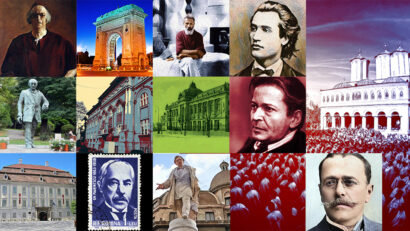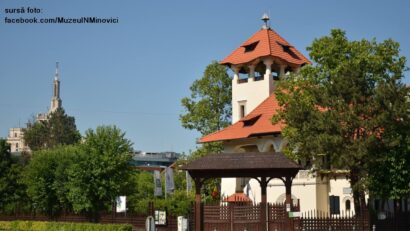Architect Horia Creanga
Horia Creanga was one of Romania's best-known modernist architects in the inter-war period.

Christine Leșcu, 12.09.2020, 14:00
Two names stand out among Romania’s modernist architects: Marcel Iancu, an avant-garde fine artist who rose to fame in Israel after having designed several gorgeous villas in Bucharest, and Horia Creanga, who designed some of the best known landmarks in the Romanian capital city. A descendant of the great Romanian prose writer Ion Creanga, Horia Creanga managed in a brief, but intensive period to modernise a major boulevard in Bucharest and the interwar industrial outskirts. Ana-Maria Zahariade, a professor with the Bucharest Architecture University and co-author of a book entitled “Horia Creanga: A monograph,” gave us a few details about the architect’s life:
“He was born in 1892 and was the grandson of writer Ion Creanga. His family was not wealthy, they were lower middle class living in Bucharest. At the end of WW1, in which he took part, Horia put together an exhibition of his watercolour works, at the Romanian Athenaeum, and sold them in order to pay for his studies at the Fine Arts School in Paris, where a lot of Romanian architects at that time used to go. Although the first Romanian school of architecture was founded in 1892, many young Romanians would further their education in Paris. After he graduated, he worked in the workshop of his university professor for a while. In Paris, he was living with his wife, Lucia Dumbraveanu-Creanga, one of the first Romanian women architects, together with whom back in Romania Horia opened their first architecture office, joined by his brother Ion Creanga as well. The office became quite successful. In the meantime Horia was also working for the City Hall, with the New Building Directorate, which was an opportunity for him to meet a lot of people who would later be his clients.”
Not many details are known today about Horia Creanga’s personal life. But his works are well known, and many are still standing today. One of his first designs was the home of politician Petru Groza, who became a prime minister in 1945 and later a high-level member of the communist government. In the early 1920s, Horia Creanga built an avant-garde, Cubist-style mansion for Groza’s family. Then he started working with major private companies and industrialists for whom he designed most of his projects in Bucharest.
“His first major project, a huge one in terms of importance and magnificence, was the ARO building. It was well known abroad as well, after its coverage in the Paris-based magazine L’Architecture. Horia Creanga won a competition organised by the members of the ARO Society. This building, which was known as the Patria building in the communist years and which is now in a terrible condition, was the first modernist building on the boulevard known today as Magheru, and previously as Bratianu, which was under construction at that time. This building was the talk of the town in those years, it was seen as a skyscraper, kind of shocking. It remained shocking for a while, but the people of Bucharest were also very fond of it. It had a gorgeous cinema hall, a bar and a restaurant. In the interwar years, it hosted outstanding performances, such as one by the violinist Yehudi Menuhin or the singer Maria Tanase. It was a representative place for the modern, progressive Romanian society after the Great War. Later on, Horia Creanga designed another building on the same boulevard, the Malaxa-Burileanu building, also presented in a major foreign magazine. At present we know of 78 projects by Horia Creanga, most of which have actually been built.”
These projects include the Giulesti Theatre, currently the Children’s Comic Opera building, the Malaxa industrial works, later renamed “23 August,” in the eastern part of the city, and the Obor Halls. All these buildings were regarded as innovative not only in Romania, but in Europe as well. What drew Horia Creanga towards modernism was the simplicity and elegance of the lines. His ideal was to find the essence that gave a building its refinement and beauty. Ana-Maria Zahariade told us more about the last part of his life and about his legacy:
“He gained recognition quite quickly, although it is hard for us today to find documents to prove this. The main architecture magazine at the time in Romania, published by the Architecture Society, did not promote modernism and hardly ever featured modernist projects. But Horia Creanga was highly appreciated, and we know this because he was commissioned works and his office expanded. A lot of talented young architects worked for him, such as Haralamb Georgescu, who later rose to fame in the US. Horia Creanga’s popularity came exclusively from his works. He never taught at the Architecture University, which focused mainly on the traditional or neo-Romanian style, and his office essentially created a parallel school of architecture. Horia Creanga worked primarily for private clients, such as the ARO Society, but he was also appreciated by the authorities, and some of his works were commissioned by the municipality. He was appointed as head of the Exhibition Department and worked for national exhibitions since the end of the 1930s. And his publicly-funded works confirm the official recognition gained over the years by the modernist style.”
Today, the best-known work by Horia Creanga, the ARO-Patria building, in downtown Bucharest, is abandoned and in desperate need for immediate consolidation and repair.
(translated by: Ana-Maria Popescu)





























